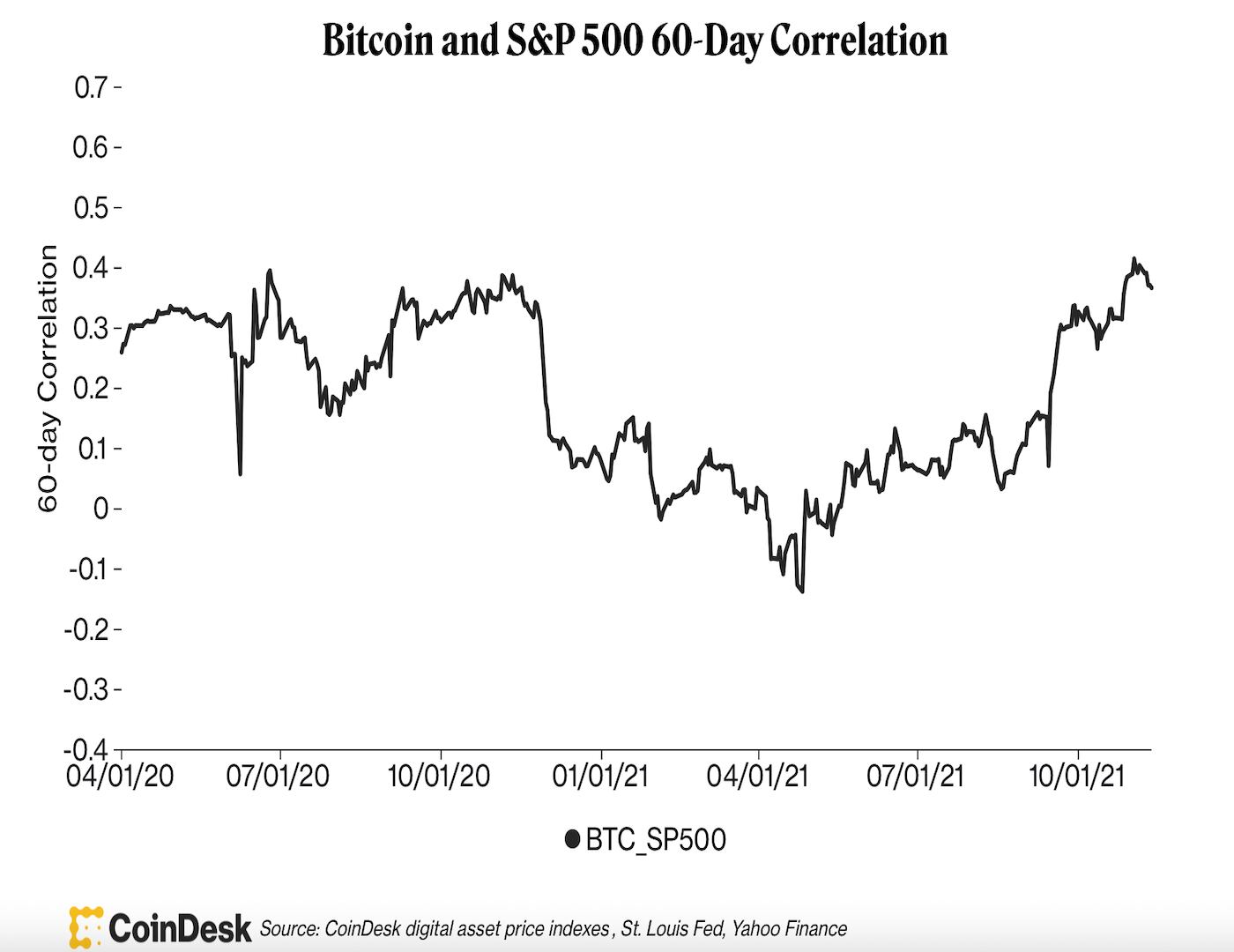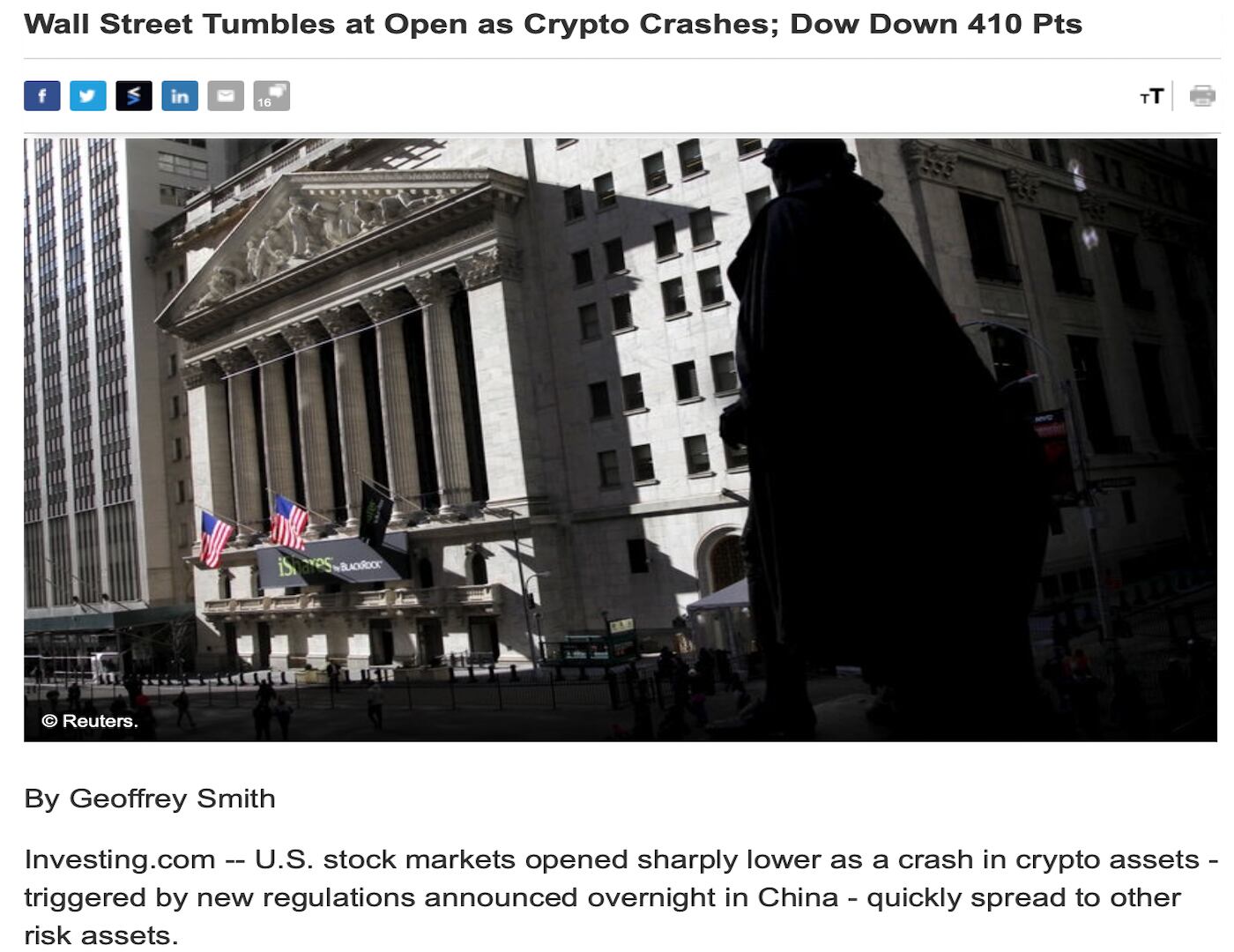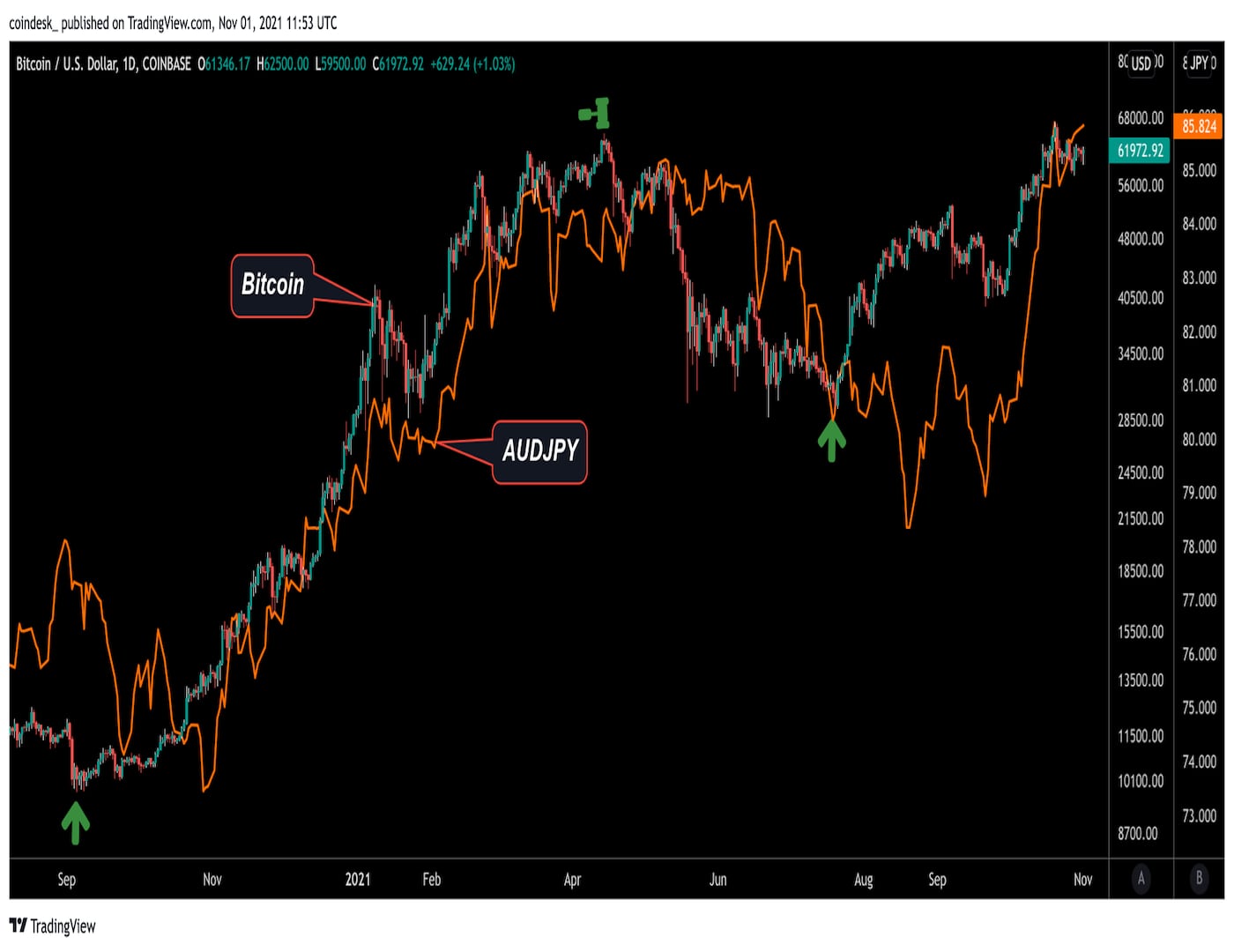Bitcoin Still a Risk Asset Despite Last Week’s Inflation-Led Rally, TradFi Experts Say

The ?bitcoin is an inflation hedge? drumbeat is growing louder as the cryptocurrency tapped fresh record highs near $69,000 last Wednesday, after the U.S. reported inflation at a three-decade high.
That was perhaps the first time the decade-old cryptocurrency traded as a store of value asset in response to economic data bolstering fears of price pressures moving out of control. However, traditional finance experts are still not convinced about its growing acceptance as digital gold, a safe haven.
?The crypto rally on high inflation is a hint on where it?s headed as an asset class, but the sharp, late-day drop underscores the limitations,? said Adam Button, currency analyst and managing editor at ForexLive. ?For now, bitcoin is still a risk-on asset.?
Risk-on refers to a situation where investors are willing to invest in growth-sensitive assets like industrial metals, equity markets, commodity currencies. That typically happens when the economy is expected to fare well, or fiat currency liquidity is abundant.
Bitcoin is quite sensitive to expectations of changes in fiat liquidity. The cryptocurrency charted a sixfold rally to over $60,000 in 10 months to April 2021 as the U.S. Federal Reserve printed trillions of dollars to counter the coronavirus-induced recession.
And while bitcoin rose by $3,000 on inflation data, the gains were more than reversed by day?s end as the interest rate markets priced in greater probability of faster and sooner Fed rate hikes. Equity markets witnessed a similar action. Central banks often raise borrowing costs and suck out liquidity from the system to contain inflation.
?Bitcoin?s reaction to inflation was seemingly more aligned to the stock market?s reading into the implications for a perhaps stretched speculative exposure rather than the dollar?s value erosion,? said John Kicklighter, chief strategist at forex research portal DailyFX. ?The cryptocurrency?s use seems to be less as a utility (like an anti-fiat) rather than a speculative vehicle to diversify into.?
The comments suggest that the cryptocurrency needs to develop resilience to stock market sell-off to cement its position as a risk-off asset and attract more safe haven demand from traditional market investors.

CoinDesk data shows the 60-day correlation between bitcoin and S&P 500 recently rose to 0.42, the highest in at least 18 months. Meanwhile, the negative correlation with the dollar index, which tracks the greenback?s value against major currencies, stands at -0.22.
Another factor supposedly stopping bitcoin from evolving into a haven asset is its price volatility. ?Equally important for bitcoin will be stability. Any asset with routine +5% intraday swings isn?t suitable for a large cohort of investors, and that will be a slow transition,? Button said, adding that it will take years to cement its relationship to the real economy.
Bitcoin?s price gyrations might cool in coming months with traders increasingly using stablecoins or fiat currencies instead of crypto coins as collateral to trade futures contracts.
Lack of anecdotal evidence
According to some observers, bitcoin?s history is too short for drawing any conclusions and could be a ?risk-on? inflation hedge at best.
Indeed, bitcoin?s use case as an inflation hedge is being tested for the first time. The U.S. five-year forward inflation expectations rate, which represents how the market foresees long-term inflation, was in a downward spiral between 2013 to early 2020, data from the St. Louis Federal Reserve Bank shows.
?We find ourselves in an environment of significantly elevated inflationary pressures, an environment that is also completely new territory for bitcoin and its reaction function, in other words, whether bitcoin is a decent inflation hedge or not remains to be seen,? Marc-Andre Fongern, senior analyst at Fongern Global FX, told CoinDesk in a LinkedIn chat.
Analysts at JPMorgan cited bitcoin?s store of value appeal and rising inflation expectations as major reasons for the cryptocurrency?s 40% rise in October. However, it is worth noting that the rally happened during upticks in the stock market.
Fongern said the cryptocurrency might face selling pressure in case the Fed responds to inflation risks with more rapid tapering or even rate hikes in the foreseeable future.
Kicklighter said bitcoin?s high volatility becomes appealing mainly when the stimulus-driven market is forced to seek out higher returns rather than sit in an asset with a negative real or inflation-adjusted rate of return.
?Though the perspective of retail traders may entertain BTC as a viable alternative to the dollar, the deeper money behind institutional interests is not going to swap out for bitcoin when liquidity is a driving force,? Kicklighter said. ?That will likely see a stronger bid for peers like the Euro, Pound and Yen which has broader acceptance throughout global financial structures.?
Barometer of speculative sentiment
Currency traders still see bitcoin as a barometer of overall risk appetite, just like the Japanese yen pairs, as well as tech and meme stocks.
?I personally refer to the ebb and flow of bitcoin movement in the same way I monitor Tesla or meme stocks,? Kicklighter told CoinDesk in an email response. ?While there are significant differences between those different markets, they provide contrast and therefore color on the appetites of retail and professional traders that are looking to take advantage of favorable speculative conditions.?
According to ForexLive?s Button, bitcoin can be used for a wider read on the markets and economy, but only on broad strokes or on a weekly basis. Big moves in crypto have had knock-on effects on stock markets earlier this year. For example, U.S. stocks fell on May 19 as bitcoin crashed 30% to $30,000.

?On a day-to-day basis, there?s more noise from bitcoin than signal if you?re trading FX, bonds, commodities or equities,? Button said, adding that astronomical rallies in meme tokens like dogecoin or shiba probably offer a better glimpse into the speculative public mindset.
A look at the price action in bitcoin and Australian dollar-Japanese yen (AUD/JPY), a currency market?s risk gauge, tells us that traditional market traders may be right in treating the cryptocurrency as a leading indicator of broader risk sentiment. The chart below shows bitcoin leading tops and bottoms in the currency pair.

Bitcoin bottomed out and began rising four weeks before AUD/JPY carved out a bottom in mid-August this year, repeating the pattern observed in September-October 2020.
?The AUD/JPY pair is very dependent on the risk environment of the global economy. The AUD will stay in demand if the global economic recovery continues, helping the pair appreciate. However, any signs of distress will push investors towards the JPY, leading to a depreciation of the AUD/JPY,? Forex.com said in a forecast article published in September.
All things considered, traditional market observers believe bitcoin is yet to find its place as an inflation hedge. That said, they agree that the cryptocurrency has crossed the Rubicon.
?As for becoming a mainstream asset, I don?t think there?s any doubt that it already is. It?s crossed the threshold now and will continue to gain acceptance,? Button said. ?That secular theme is much more important than trading it around any economic data release or whatever theme the market is flirting with.?
Bitcoin was last seen trading near $65,825, representing a 0.5% gain on the day, according to CoinDesk data.
